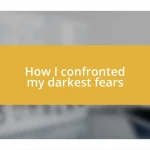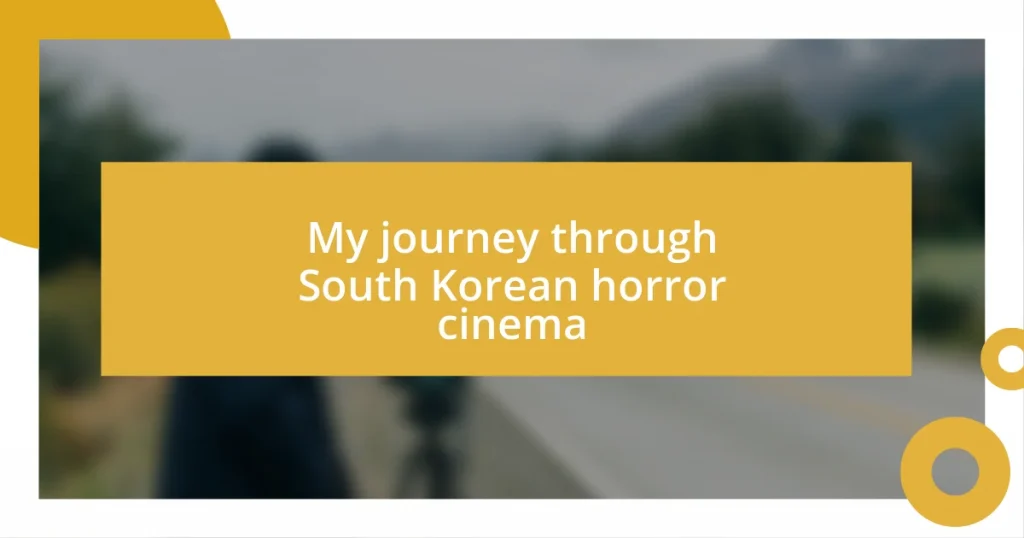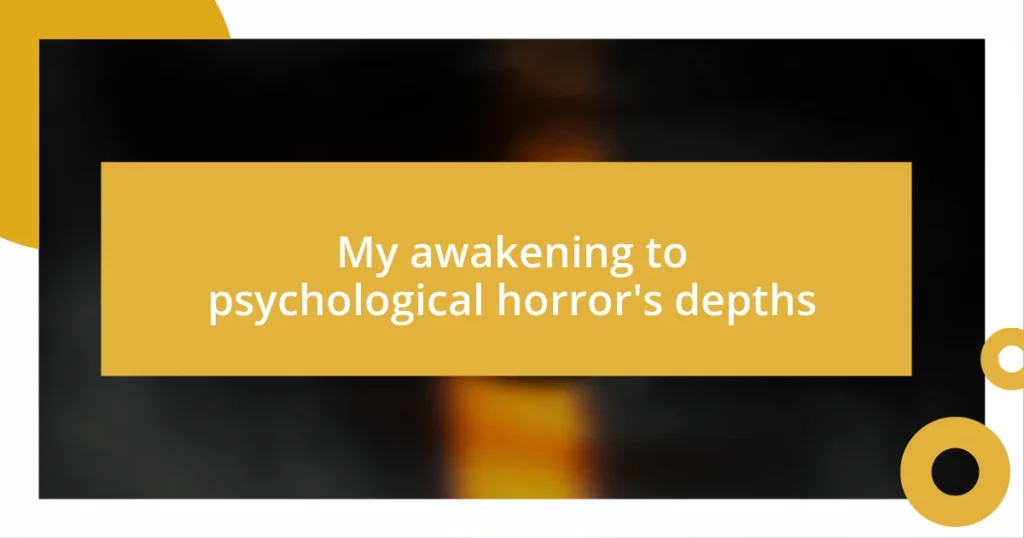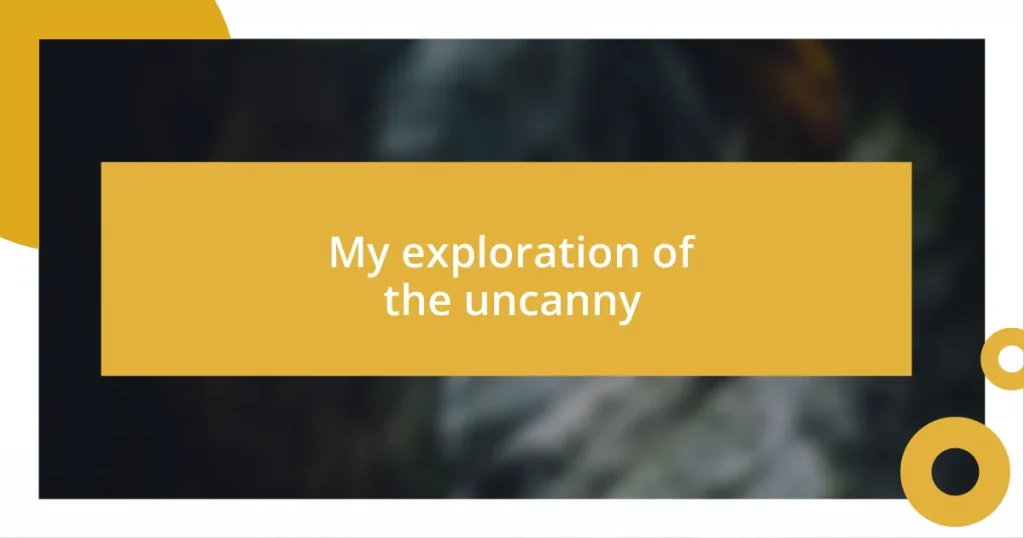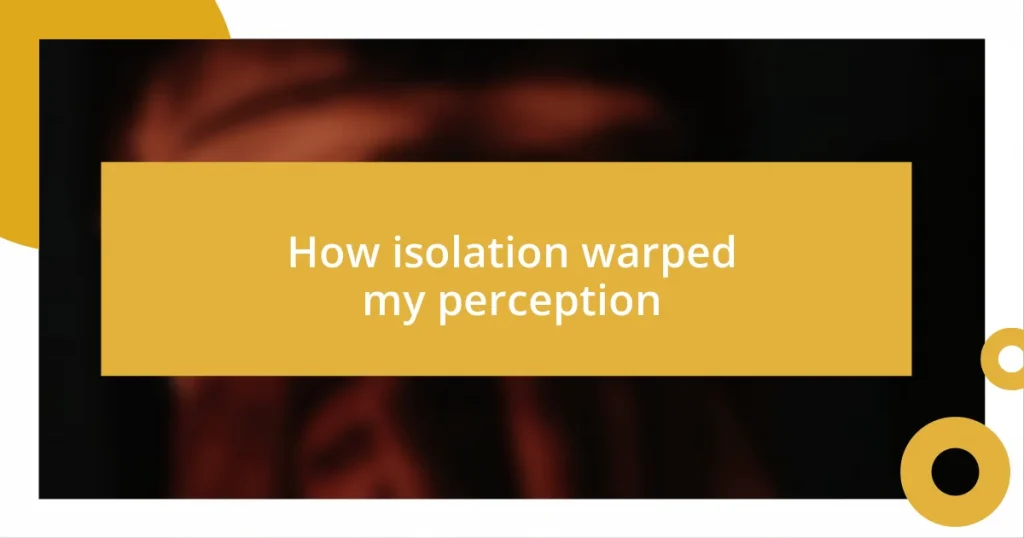Key takeaways:
- Korean horror cinema is distinguished by its blend of psychological tension, cultural relevance, and realism, often addressing societal issues and personal trauma.
- Influential films like “Oldboy,” “Train to Busan,” and “A Tale of Two Sisters” showcase complex narratives that challenge traditional horror tropes while provoking deeper reflections on morality and human connection.
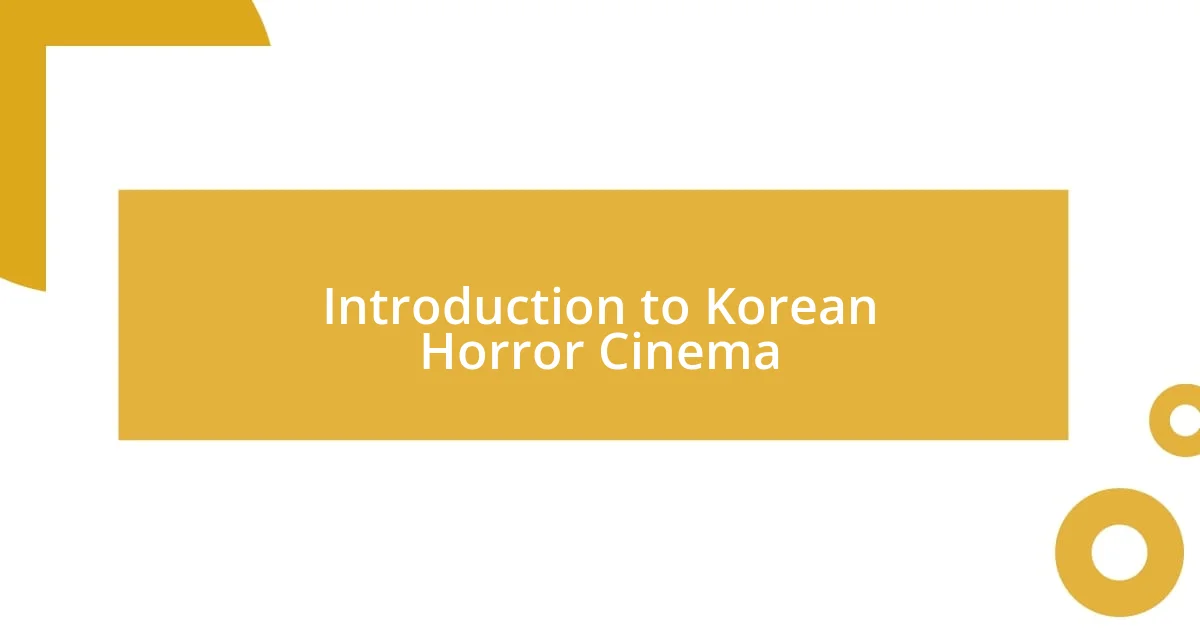
Introduction to Korean Horror Cinema
Diving into Korean horror cinema feels like stepping into a labyrinth of fear and fascination. It’s not just about jump scares; there’s a profound emotional weight to many films that lingers long after the credits roll. I remember watching “The Tale of Two Sisters” for the first time—how it immersed me in a haunting story that intertwined family trauma with supernatural elements. Did I truly understand the depths of fear it explored, or was I merely caught in its spell?
The unique storytelling in Korean horror often reflects societal issues and cultural nuances that might be overlooked in Western films. I’ve found that films like “Parasite” and “Train to Busan” do more than frighten; they provoke thought about class struggles and community resilience. Have you ever pondered how these themes resonate with your own experiences? For me, these layers added significant depth, turning simple scares into powerful reflections on human nature.
As I navigated through the genre, it became clear that Korean horror distinguishes itself with a blend of psychological tension and folklore-driven narratives. Films like “The Wailing” had me on the edge of my seat, blending mystery with spiritual and existential threats. In each film, I was left wondering: what drives our deepest fears? The answers aren’t always clear, but that’s what keeps me coming back for more.
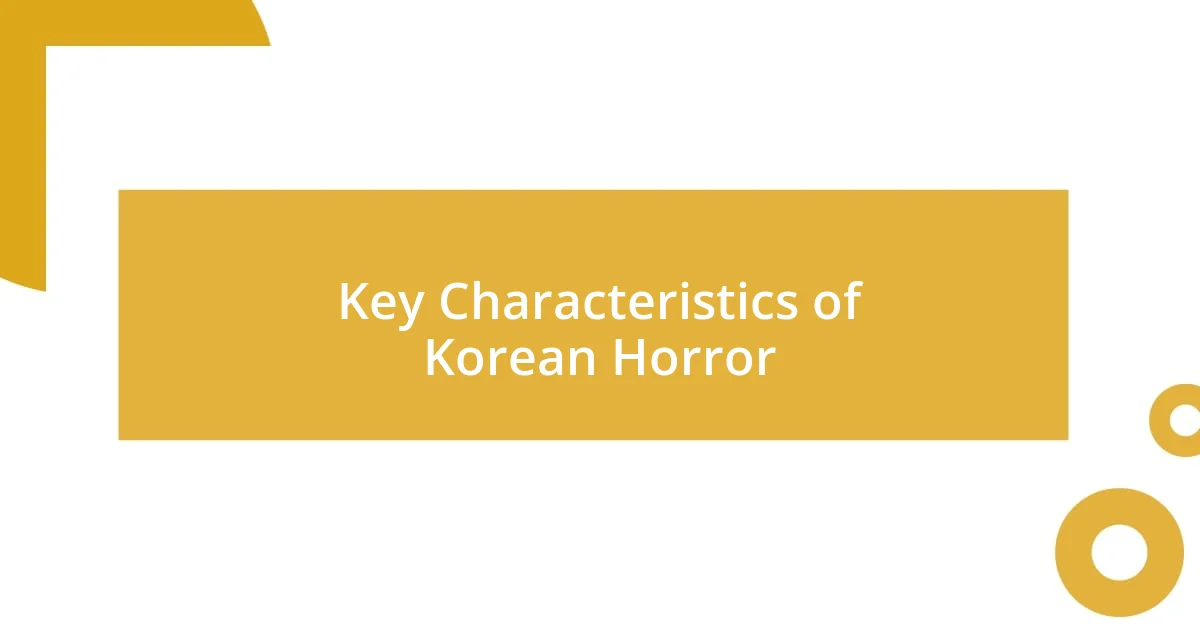
Key Characteristics of Korean Horror
Korean horror thrives on its atmospheric tension and character-driven narratives. I still recall the chilling experience of watching “I Saw the Devil,” where the lines between good and evil blurred. It’s an unsettling journey through vengeance that leaves the viewer questioning their own morals long after the film ends. This depth of character development often enhances the suspense, making the horrors feel more real and relatable.
Another distinctive feature is the cultural relevance embedded in these films. For instance, I noticed how folklore and urban legends, like those seen in “The Host,” are not just mere background elements but pivotal to the plot. These stories evoke fears that resonate with the audience’s cultural psyche. I often find myself reflecting on how these elements shape my understanding of horror, drawing connections to my own cultural experiences and fears.
Realism is integral to Korean horror, and I can’t help but feel uncomfortable during scenes that mirror everyday life. “Bedevilled” struck a chord with me as it explores themes of isolation and societal neglect, making the horror feel inescapable. It’s as if the horror creeps into the mundane, a constant reminder that fear can exist in our familiar surroundings. This unique perspective fosters a haunting sense of relatability that is both terrifying and thought-provoking.
| Characteristic | Description |
|---|---|
| Psychological Tension | Focus on character development and moral ambiguity. |
| Cultural Relevance | Incorporation of folklore and societal issues into the narrative. |
| Realism | Depictions of everyday life as a source of horror. |
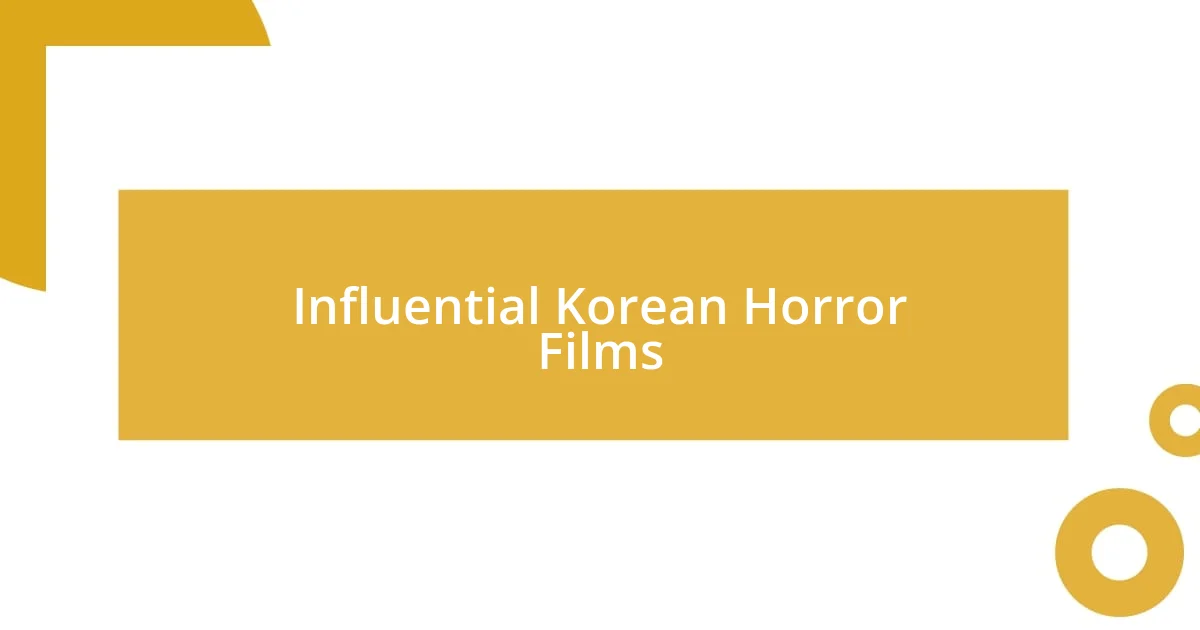
Influential Korean Horror Films
Korean horror films have had a significant impact on the genre, introducing unique storytelling methods that resonate deeply with both Korean and international audiences. One film that left a mark on me is “Oldboy,” which blends elements of thriller and horror while exploring themes of vengeance and redemption. The emotional intensity of its narrative really struck me; I was left in disbelief, reflecting on the dark motivations that fuel our actions. This blend of psychological depth and twisted storytelling compels viewers to reevaluate their perceptions of morality and justice.
Here are a few influential Korean horror films that have shaped the genre:
- The Ring Virus (1999): A remake of the Japanese classic that set the stage for a wave of Asian horror.
- A Tale of Two Sisters (2003): A psychological horror that intricately weaves family dynamics with supernatural elements, leaving me questioning reality.
- The Chaser (2008): This film skillfully combines crime and horror, creating a berserk atmosphere that haunted me long after watching.
- Train to Busan (2016): An emotionally charged zombie apocalypse film that not only terrified me but also moved me with its themes of sacrifice and humanity.
Each of these films has contributed to the intricate tapestry of Korean horror, showcasing the genre’s ability to tackle complex emotional and societal issues. It’s fascinating how they push boundaries and challenge traditional horror tropes.
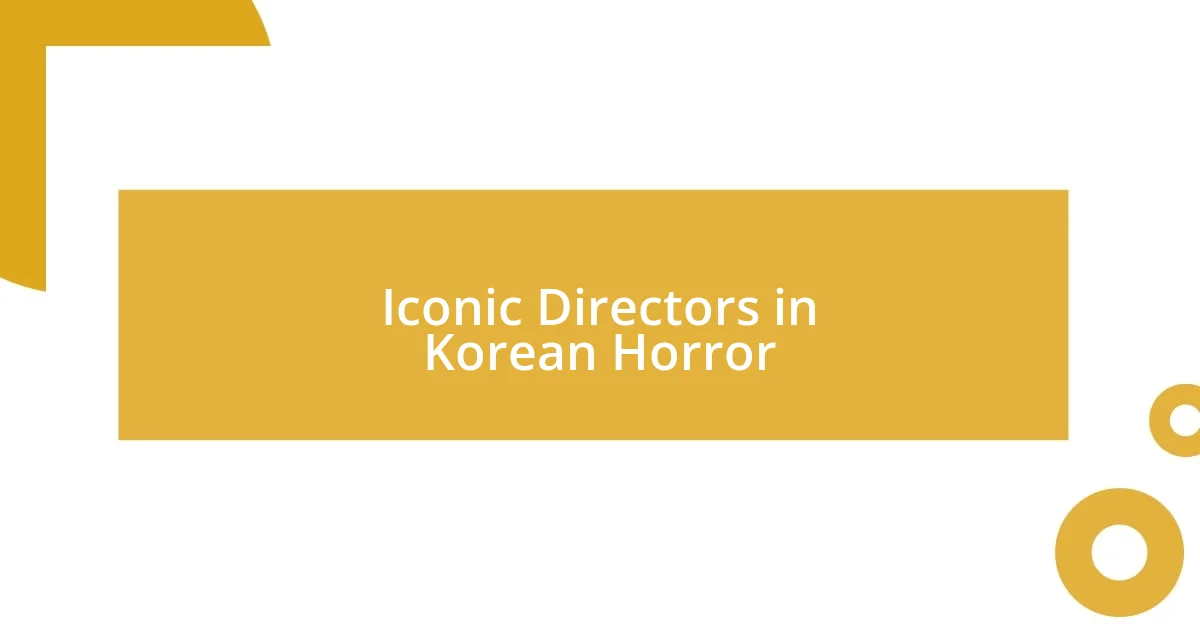
Iconic Directors in Korean Horror
When I think of iconic directors in Korean horror, names like Park Chan-wook and Bong Joon-ho immediately come to mind. Park’s films, especially “Thirst,” really challenged my perception of horror by combining eroticism and psychological depth in ways I hadn’t encountered before. The way he blurs genres makes the horror feel all the more unsettling, don’t you think?
Then there’s Kim Ji-woon, whose masterful storytelling in “The Eye” truly left an imprint on me. He skillfully weaves supernatural elements with gripping drama, creating tension that’s almost unbearable at times. The moment when the protagonist realizes the depth of her situation completely took my breath away; that moment felt like a gut punch, reinforcing how effectively he plays with audience expectations.
Lastly, let’s not forget Na Hong-jin, the visionary behind “The Wailing.” I still vividly remember the shivers running down my spine during the film’s climax; it’s a masterclass in suspense. His use of folklore and mystery resonates deeply within Korean culture, drawing me into a realm where fear and the unknown coexist. Isn’t it fascinating how these directors shape not only the stories we watch but also our own discourses on fear and society?
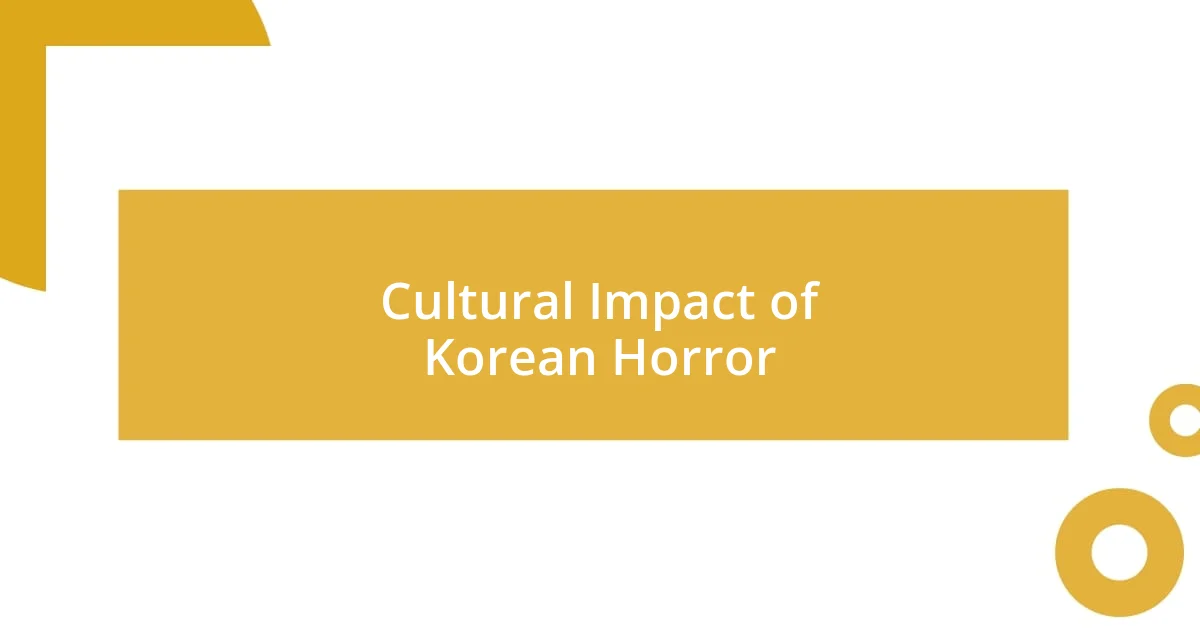
Cultural Impact of Korean Horror
The cultural impact of Korean horror films is profound and often transformative. Watching “A Tale of Two Sisters” for the first time, I found myself not just frightened, but deeply moved by the portrayal of familial relationships and trauma. It’s incredible how horror can serve as a mirror, reflecting the complexities of life and prompting discussions around mental health and societal expectations.
Additionally, Korean horror has effectively challenged the Western stereotypes of the genre. My experience with “Train to Busan” was more than just a thrilling ride; it cleverly unwrapped themes of sacrifice and human connection amidst chaos. It’s a beautiful reminder that horror isn’t merely about scares; it can also evoke profound empathy and understanding.
Moreover, this cinematic wave has provided a platform for addressing taboo subjects in South Korean society. Films like “The Wailing” struck a personal chord with me; they delve into ancestral beliefs and societal fears in ways that resonate with cultural identity. Isn’t it revealing how these narratives influence our views on tradition and change? The discussions they provoke linger long after the credits roll, challenging us to reflect on our fears and beliefs in a modern context.
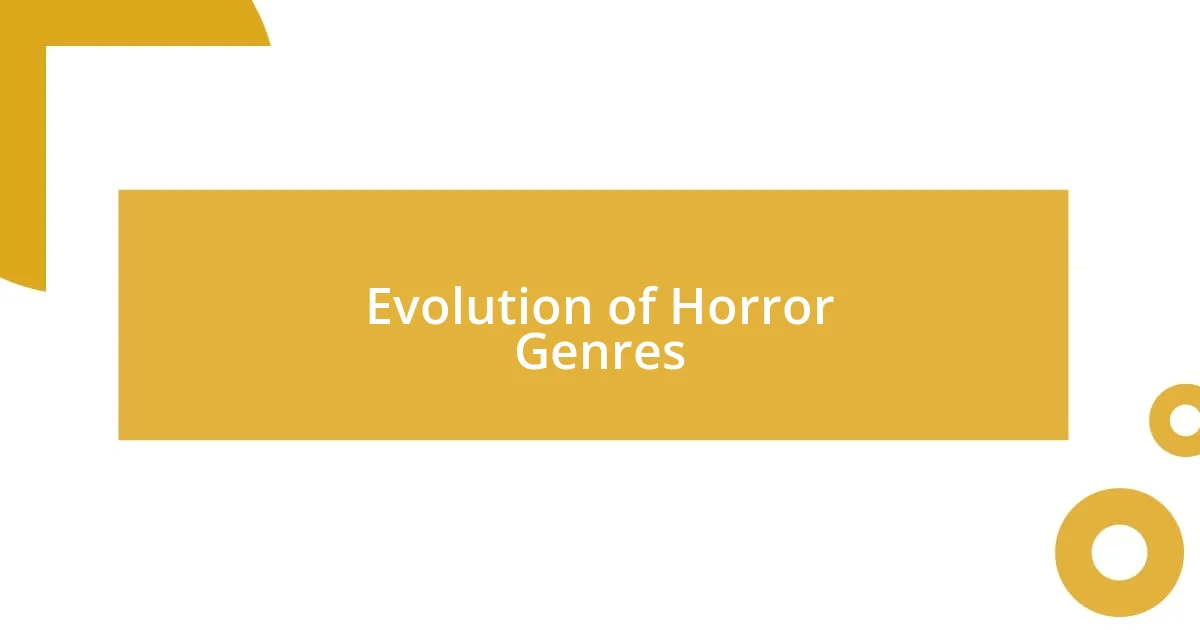
Evolution of Horror Genres
As I delved into the evolution of horror genres, I couldn’t help but notice the significant shifts over the decades. Early South Korean horror films predominantly focused on supernatural elements, drawing heavily from folklore and cultural myths. I found this fascinating; watching films like “The Ring Virus,” I was captivated by how they reflected societal fears of the unknown, showcasing the tension between tradition and modernity.
However, the genre transformed dramatically in the late 1990s and early 2000s. This era ushered in a wave of psychological horror that blended graphic violence with a deep exploration of human emotion. I remember experiencing an unsettling mix of dread and empathy while viewing “Oldboy.” The film’s focus on revenge and its haunting moral complexities challenged my understanding of good and evil, reshaping the way horror could be presented.
Today, Korean horror continues to evolve, incorporating elements of dark comedy and social commentary. Films like “Parasite,” though not traditional horror, cleverly use suspense and tension to dissect class struggles. Reflecting on my own reactions, I realize how effectively these narratives hold a mirror to societal issues, making me question what truly frightens us. It’s a thought-provoking journey, isn’t it? The horror genre’s ability to adapt and address contemporary themes keeps it dynamic and relevant, ensuring that we always have something new to fear—and perhaps understand.





